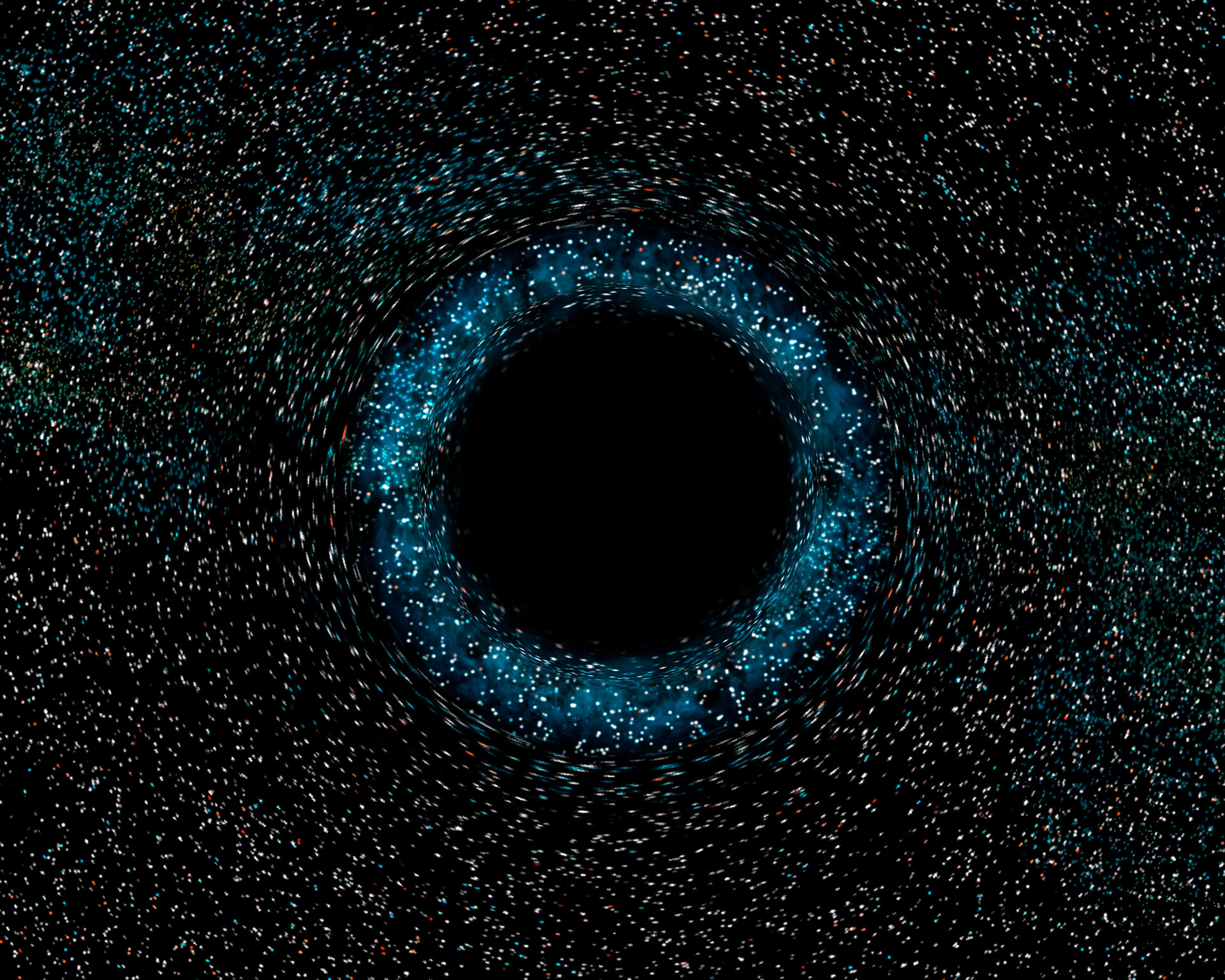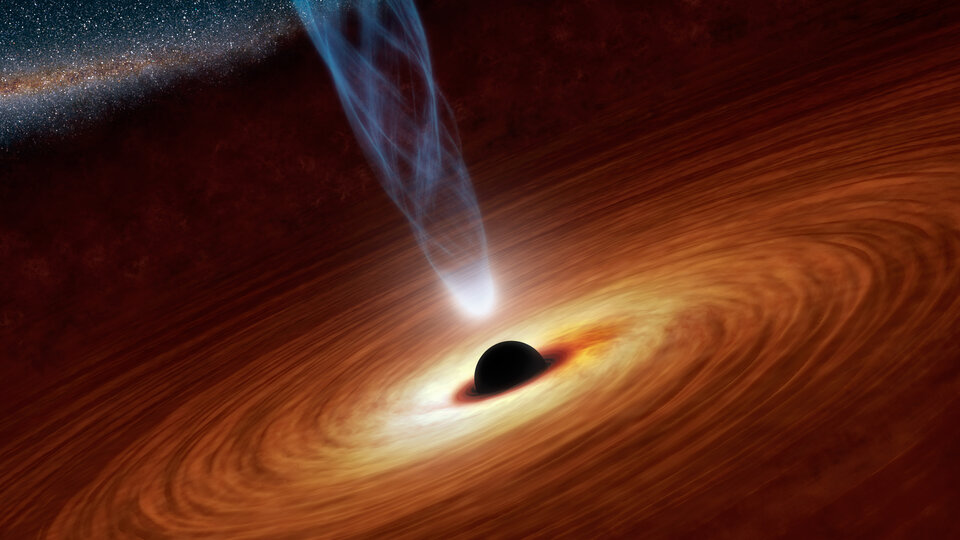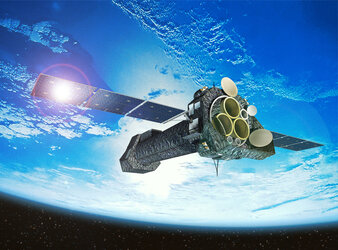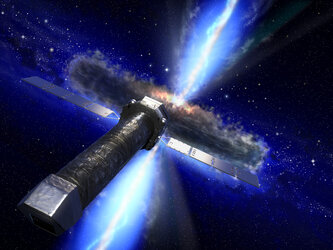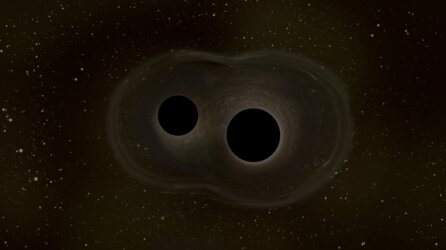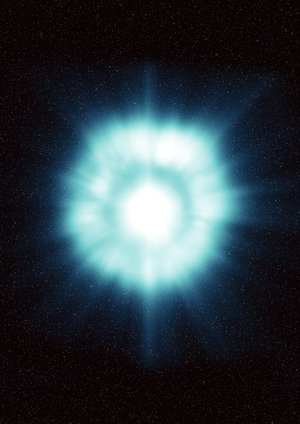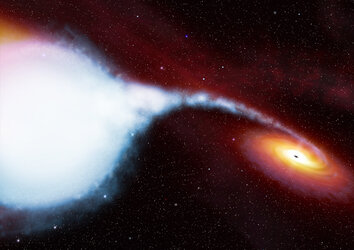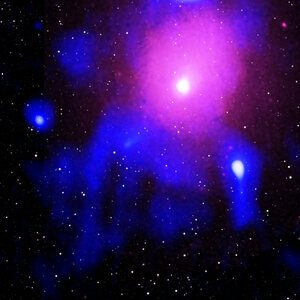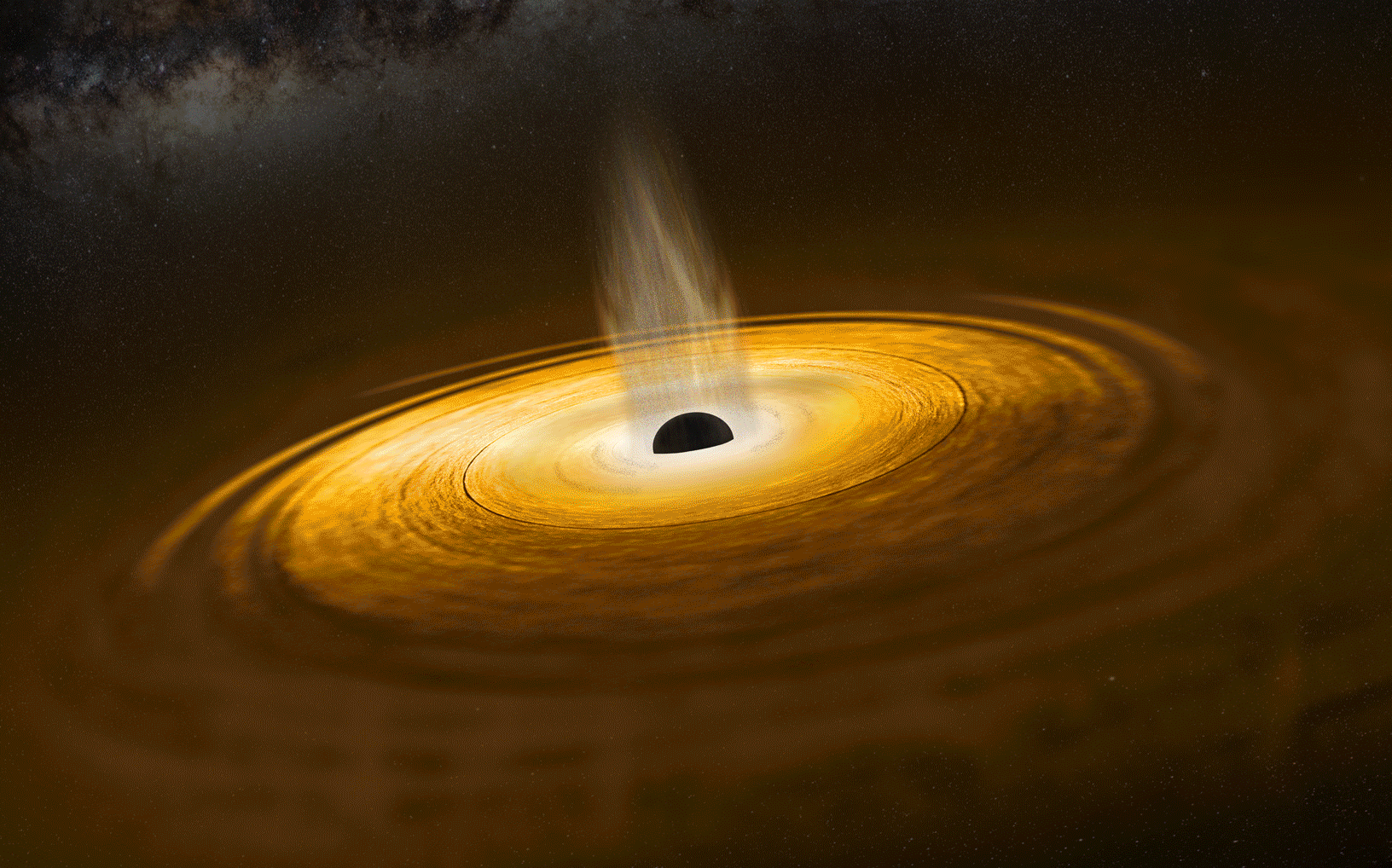Black holes
What are black holes? How do they form and evolve? What effect do they have on their surroundings and the rest of the Universe – and why should we care about them?
ESA is working on answering these questions and many more using a suite of unique but complementary space missions.
Even light cannot escape
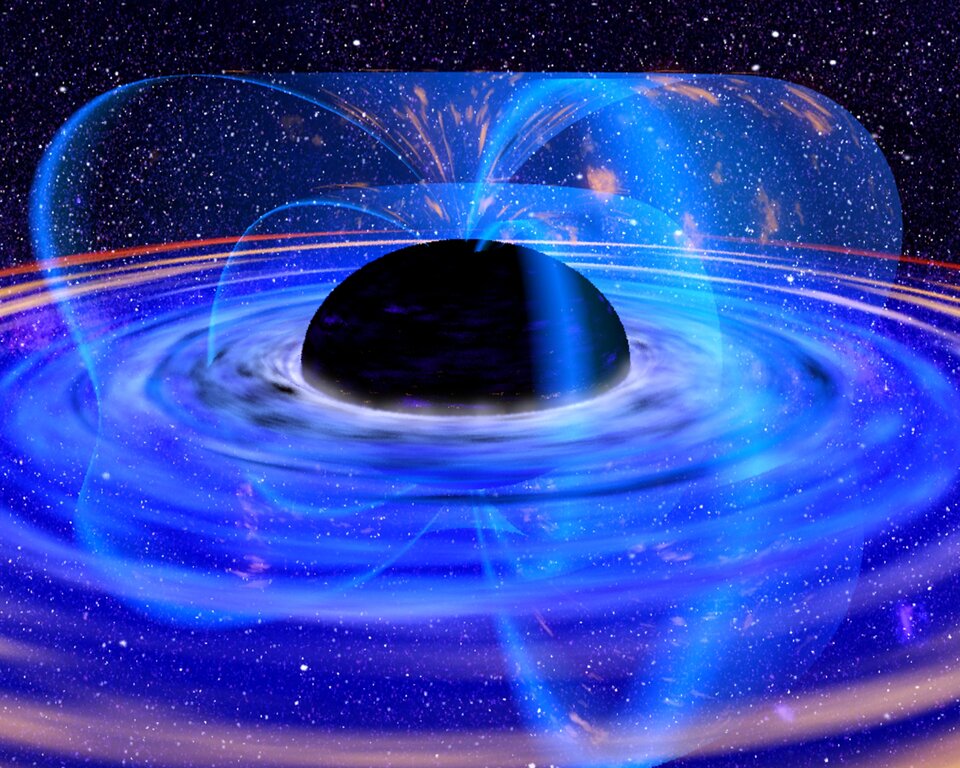
A black hole is an extremely dense object whose gravity is so strong that nothing, not even light, can escape it.
Every object in space has an 'escape velocity': the minimum speed at which something must move to escape the object's gravitational field. On the surface of Earth, the escape velocity is about 11 kilometres per second, meaning that anything leaving our planet must travel faster than this to break free of Earth's gravitational pull.
This may sound fast, but Earth’s escape velocity pales in comparison to that of a typical black hole. A black hole’s gravitational field is so strong that its escape velocity is greater than the speed of light. This means that even light cannot escape (rendering them ‘invisible’, hence the name ‘black’ hole).
How is a black hole born?
During a star’s lifetime, it produces energy by fusing heavier and heavier elements in its core. Eventually, the star has no material left that can be transformed into energy, but what happens next depends on the size of the star.
Stars up to about ten times the mass of the Sun expand to become red giants and then white dwarfs surrounded by planetary nebulas (which have nothing to do with planets). But larger stars with iron cores begin to collapse, starting with the innermost layers. When the outer layers fall onto this compact core, they bounce back and are expelled into space as a supernova. If the compact core that remains is more than three times the mass of the Sun, it is crushed into a smaller and smaller volume, its gravitational attraction increases, and its escape velocity becomes larger. Eventually a point is reached when even light cannot travel fast enough to escape – this is a black hole.
Other black formation theories exist, for example that most black holes formed immediately after the Big Bang. Future ESA missions such as Webb, LISA and Athena, could help prove or disprove these theories.


Access the video
From star-sized to supermassive
There are many remaining mysteries surrounding black holes, one being that they seem to be either ‘stellar mass’ (a few times the mass of the Sun) or ‘supermassive’ (millions, if not billions, of times the mass of the Sun).
We know that supermassive black holes lurk at the centres of most galaxies, including the Milky Way. Their enormous gravity causes nearby stars and gas to swirl around them, getting closer and closer… this ‘accretion’ of matter onto the black hole powers some of the most energetic objects in the Universe, including quasars and blazars.
In the past it was believed that supermassive black holes started as stellar mass black holes that accreted matter over time. But space telescopes such as Hubble and ESA’s XMM-Newton have observed supermassive black holes in the early Universe, where they wouldn’t have had time to grow from small stellar mass black holes. The answer is likely to be medium-sized (intermediate-mass) black holes, which grow more quickly to become supermassive black holes. In 2018, XMM-Newton was used to discover the best intermediate-mass black hole candidate observed so far, and finding more intermediate-mass black holes is one of the big goals of ESA’s LISA mission.
Observing black holes
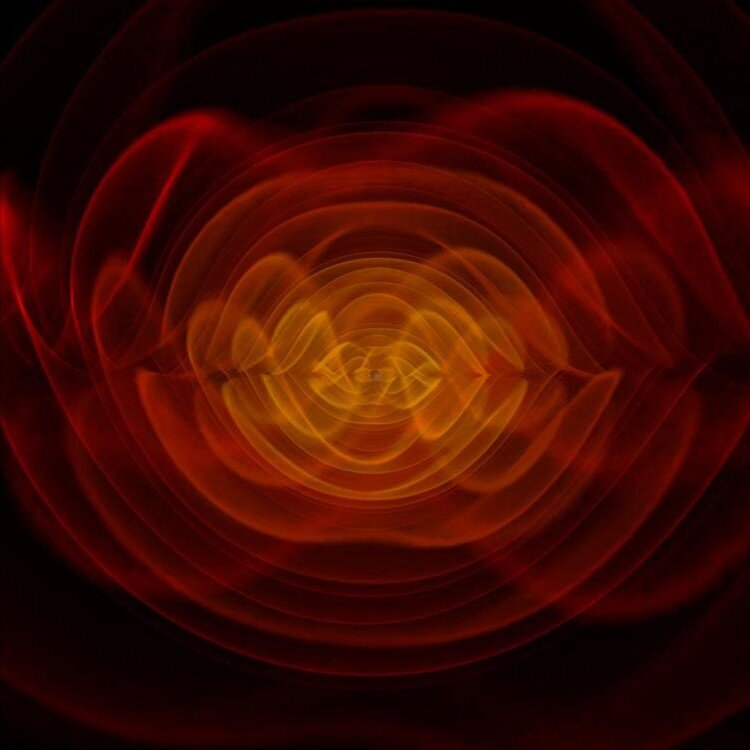
Because light cannot escape a black hole, these objects can only be spied indirectly; as a result, they are difficult to study and therefore have remained somewhat mysterious. But thanks to state-of-the-art space missions developed by ESA and other science agencies, we are gradually uncovering the secrets behind how black holes form, evolve and behave.
Black holes were predicted by Albert Einstein through his general theory of relativity in 1915, but the idea of a black hole is actually much older. In 1784 John Michell argued that if light was indeed a stream of particles (as Isaac Newton’s theory suggested), then it should be influenced by gravity. Following this assumption, Michell predicted that a star 500 times wider than the Sun would have such a strong gravitational field that even light could not escape. He called these objects ‘dark stars’.
However, they remained a theoretical curiosity for almost three centuries until space telescopes could finally probe the highly energetic X-ray emission from the stars and gas in the vicinity of these extreme objects.
Einstein also predicted gravitational waves – ripples in the fabric of space-time emitted during the most powerful events in the Universe, such as pairs of black holes coming together and merging. A black hole merger was first detected in 2015 by LIGO, the Laser Interferometer Gravitational-Wave Observatory, which measured the gravitational waves created by the giant collision.
As for the first direct image of a black hole, in 2019 the Event Horizon Telescope captured a black hole’s dark silhouette cast against light from matter in its immediate surroundings. Then in 2021, ESA’s XMM-Newton saw X-ray light from behind a black hole, enabling them to study the processes taking place on its far side.
ESA's black hole missions
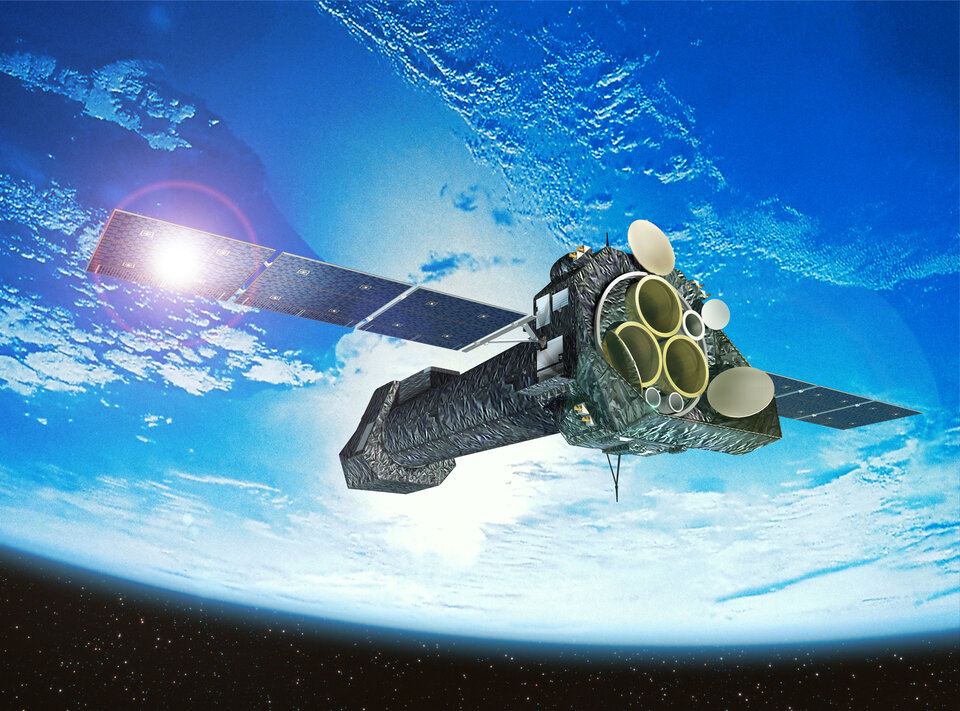
ESA currently operates two high-energy space observatories: XMM-Newton and Integral. Together, these telescopes probe the highly energetic emission from matter in the vicinity of black holes.
Since its launch in 1999, the XMM-Newton X-ray observatory has helped scientists to investigate some of the most violent and mysterious cosmic phenomena, including the interaction of black holes with their surroundings. XMM-Newton has also explored the origin of powerful explosions known as gamma-ray bursts, which are thought to be caused by black holes.
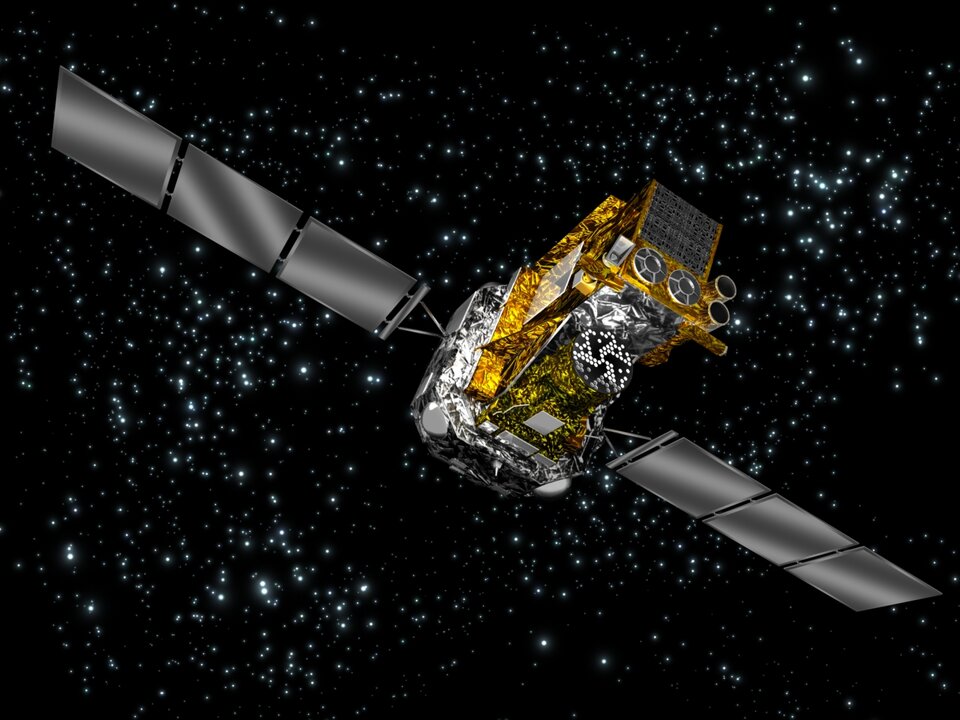
Integral – or the International Gamma-Ray Astrophysics Laboratory – is the first space observatory that can simultaneously observe objects in gamma rays, X-rays, and visible light. Its principal targets include gamma-ray bursts and regions in the Universe thought to contain black holes. Integral is helping us understand the black hole at the centre of the Milky Way, as well as those at the centres of other galaxies.
Looking to the future, ESA’s LISA and Athena missions will work both individually and together to address fundamental questions in modern astrophysics. Together, the duo could reveal much about distant and merging black holes, bright quasars in active galaxies, rapid jets around spinning black holes, the cosmic distance scale, and the speed of gravity.
By combining a large X-ray telescope with state-of-the-art scientific instruments, Athena will address key questions in astrophysics, such as how black holes grow and shape their galaxies. Athena will observe hundreds of thousands of black holes, from relatively near to far away, and map the million-degree-hot matter in their surroundings. This includes black holes that formed in the first few hundred million years of the Universe’s long history.
LISA will be the first space-based observatory dedicated to studying gravitational waves, some of which can only be detected using a space observatory that spans millions of kilometres. Using these waves, LISA will be the first mission to probe the entire history of the Universe. Formed of three spacecraft flying in a triangular formation, LISA will help us explore the fundamental nature of gravity and black holes.
Although XMM-Newton, Integral, Athena and LISA are ESA’s most dedicated black hole missions, other missions are also contributing in big ways. For example, the NASA/ESA/CSA James Webb Space Telescope will help answer the question ‘did black holes form immediately after the Big Bang?’, the NASA/ESA Hubble Space Telescope has found black holes three billion times as massive as our Sun at the centre of some galaxies, and ESA’s Euclid mission, which will probe the dark Universe in greater detail than ever before, could help identify primordial black holes as dark matter candidates.














 Germany
Germany
 Austria
Austria
 Belgium
Belgium
 Denmark
Denmark
 Spain
Spain
 Estonia
Estonia
 Finland
Finland
 France
France
 Greece
Greece
 Hungary
Hungary
 Ireland
Ireland
 Italy
Italy
 Luxembourg
Luxembourg
 Norway
Norway
 The Netherlands
The Netherlands
 Poland
Poland
 Portugal
Portugal
 Czechia
Czechia
 Romania
Romania
 United Kingdom
United Kingdom
 Slovenia
Slovenia
 Sweden
Sweden
 Switzerland
Switzerland


























